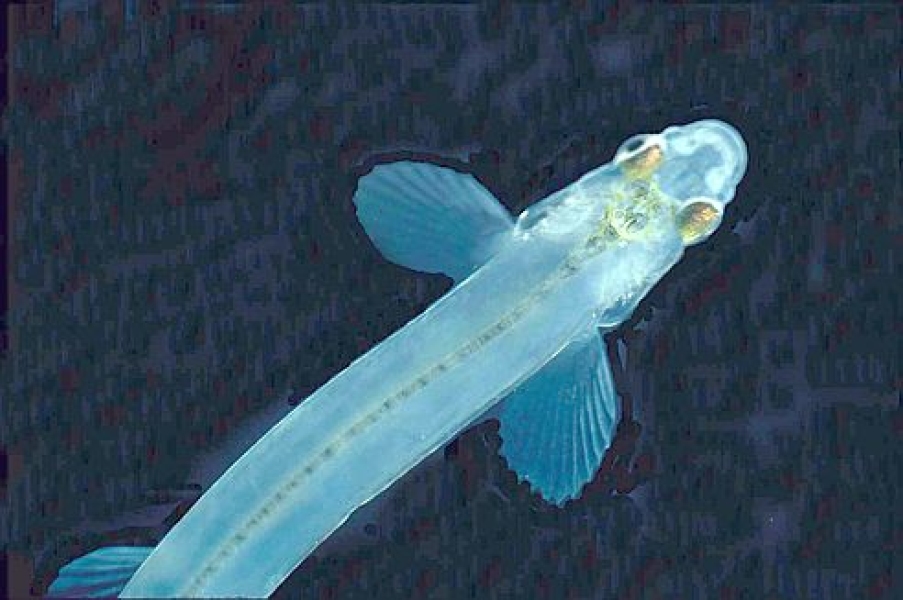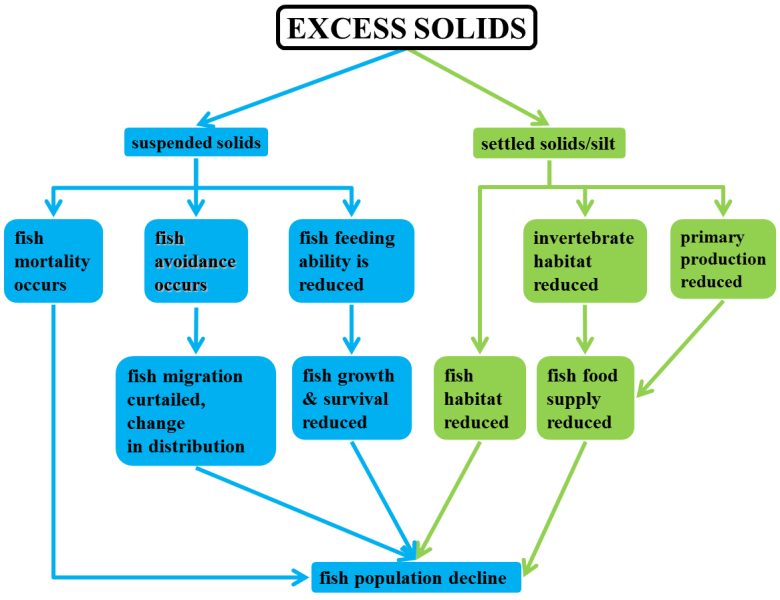NIWA research has established turbidity limits to protect fish in New Zealand rivers for peak-flow conditions (i.e. floods) when extreme turbidities may kill fish, and for base-flow conditions when long-term exposure to sublethal turbidities may affect fish behaviour and reduce their populations.
As the fish species that are most sensitive to turbid conditions do not occur in all rivers and streams, and are not necessarily present at all times of the year, the application of turbidity limits to protect fish depends on knowledge of both the distributions and life history patterns of the sensitive species. NIWA has therefore developed a decision support system (DSS) to help water managers apply these limits.
This DSS can be used for:
- planning purposes, to identify where silt-generating activites could be a concern to fishlife and when such activities will have most or least effect,
- monitoring, to determine when limits are exceeded in receiving waters and therefore when silt-generating activities need to be curtailed, or where silt retention measures need to be increased,
- and restoration, to identify waterways where chronic, long-term turbidity is currently restricting fish populations. Remedial actions such as riparian planting may be required to stabilise slips and reduce suspended solids entering such waterways.
Decision Support System
The Decision Support System has two parts: one for peak flow (see link below) and the other for base flow (see link below) conditions. The DSS for peak flow conditions is based on tests that determined the turbidity levels causing the death of fish within 24 hours. In comparison, the DSS for baseflow conditions is based on experiments that identified the turbidity levels at which fish behaviour (i.e. avoidance and/or feeding) was affected.
The variable used to measure the concentration of suspended solids in the water is turbidity and is expressed in terms of NTU (Nephelometric Turbidity Units). This unit is used in preference to measuring the actual concentration of suspended solids because determination of the latter is time-consuming and can only be done in a laboratory. NTU values are highly correlated with suspended solids levels and are relatively easy to measure and to monitor on site via portable turbidometers and data loggers.
The DSS is based on seven years’ research by NIWA. Although it is state-of-the-art, many gaps in our understanding of how turbidity affects fish still remain and would take a further seven years to fully explore and refine. In particular, knowledge of the long-term implications of increased turbidity on the habitats and foods of fish (as against on the fish themselves) is in its infancy. Furthermore, experiments with rare species have not been carried out because of their scarcity. Therefore, this DSS only covers the direct effects of increased turbidity on common riverine fish (i.e., the mechanisms on the blue side of the diagram to the right). It does not address the potentially more insidious, indirect effects of settled solids on river or stream habitats (green side of diagram top right). Turbidity limits therefore need to be set with this potential limitation in mind.
-

DSS for setting turbidity limits at base flows
DSS for setting turbidity limits at base flows -

DSS for setting turbidity limits at peak flows
DSS for setting turbidity limits at peak flows


